Lateral Pelvic Tilt ( Left vs Right Pelvic Tilt )
What is a Lateral Pelvic Tilt?
Lateral pelvic tilt, a common musculoskeletal issue, refers to the asymmetrical positioning of the pelvis in the frontal plane, where one side of the pelvis is higher than the other. This imbalance can lead to various discomforts and dysfunctions in the lower back, hips, and legs, affecting posture and movement patterns.
Everybody has some degree of asymmetry in their bodies because of the way we use and hold them throughout our lives. Not all bodies are symmetrical. This imbalance is entirely typical and to be expected. But occasionally, like in the case of a lateral pelvic tilt, a little too much asymmetry can make us more at risk of injury, limit our range of motion, and impair our general physical performance. Understanding how the pelvis develops is important for understanding how poor posture leads to a lateral pelvic tilt.
A group of muscles supports the pelvic bone, which is located at the top of the thigh bones (femurs) and helps to stabilize the hips so that the legs may move freely.
These ligaments and muscles consist of:
- Adductors Muscle
- Gluteus medius Muscle
- Quadratus lumborum (QL) Muscle
- Obliques Muscle
- TFL, or tensor fascia lata Muscle
A lateral pelvic tilt may arise as a result of a muscular imbalance between these muscles, which can be caused by an injury, tightness, weakness, or overuse.
Definition:
- Left pelvic tilt: This condition is characterized by the right side of the pelvis being higher than the left.
- When the left side of the pelvis is raised higher than the right, this condition is known as the right pelvic tilt.
It is the asymmetrical pelvic posture in which one side’s waist height is greater than the other. One side’s waist height is lower than the other (hip hike). (Drop your hips) It is also referred to as different hips.
A lateral pelvic tilt can be caused by a number of conditions, such as scoliosis and leg length discrepancy, but bad posture is one of the most frequent reasons for this postural imbalance.
In particular, a lateral pelvic tilt is caused by the adductors muscle, gluteus medius muscle, and quadratus lumborum muscle tightening and shortening on one side of the body and the same muscles weakening and extending on the other.
How can one evaluate whether they have a pelvic tilt to the side?
Place your feet shoulder-width apart in front of a large mirror or piece of glass.
Alternatively known as the anterior superior iliac spine, position the heels of your shoes on the front of your hip bones.
Imagine a parallel line between your hands, or hold a piece of thread stretched between both of them.
Rather than inclined up or down, the line connecting your hands should be parallel to the floor. Should the line not be comparable, you can have a pelvic tilt to one side.
Causes of pelvic tilt, both left and right:
Poor Posture Habits
Your body’s tissues will adapt to the postures you keep it in for extended periods of time—for example, hours at a time, every day for months or years—so if you consistently maintain one hip up, your body could also adapt to that position.
Treatment for lateral pelvic tilts resulting from significant structural diseases, such as structural scoliosis, is even more challenging.
Lateral pelvic tilts are functional abnormalities that are often treated with physical therapy, stretching, and occasionally muscle relaxants. They are caused by muscular tension.
Obesity and Having a Bad Posture
People who sit for extended periods of time with poor or incorrect posture may have a lateral pelvic tilt.
Long periods of sitting alter the interaction between the lower body’s muscles and ligaments in addition to putting excessive strain on the spinal column.
The muscles and ligaments that support and mobilize the pelvic region might sustain damage, overcompensate, and re-injure yourself as a result of this muscular imbalance if it is not treated.
Unbalanced muscles: (Sagittal plane)
An imbalance in the muscles of the quadratus lumborum, adductors, and glute medius can cause a lateral pelvic tilt.
Additional muscles used: Tensor fascia latae, obliques
The comparatively weak glute medius muscle, the tight quadratus lumborum muscle, and the tight adductors will cause the pelvis to hip hike.
The weak quadratus lumborum muscle, the comparatively tight glute medius muscle, and the weak/elongated adductor muscles will cause the pelvis to hip drop to the side.
Leg length discrepancy
A lateral pelvic tilt is caused by one leg being physically longer than the other.
Generally, the higher hip is on the side of the longer leg.
How to gauge your legs’ total length:
Maintain a prone position.
Calculate the distance between the Medial Malleolus and the ASIS.
Perform both sides.
Outcomes: You will have a leg length difference if these lengths differ noticeably between the legs.
Neurological disorders
A laterally tilted pelvis can result from any disorder that affects the nerves supplying the control of the pelvic musculature.
The glute medius muscle is supplied by the superior gluteal nerve.
Symptoms of Lateral Pelvic tilt:
- tight muscles in the thighs and pelvis.
- stomach and gluteus maximus muscles are weak.
- An outstretched stomach and a curved lower spine are signs of poor posture.
- Uneven Hips & Gait: Having an uneven stride or gait because one hip is lowered than the other is the most prominent sign of a lateral pelvic tilt.
- Different Shoulder Heights: When one hip is higher than the other, the shoulder on that side will often be lower than the other.
- Leg Length Discrepancies: Leg length discrepancy is a condition that is sometimes mistaken for a lateral pelvic tilt. A person who exhibits lateral with a pelvic tilt may notice a variation in leg length.
- Leg Bone Rotation: A lateral pelvic tilt typically causes the leg bones to rotate internally. It should not be discounted that the lateral pelvic tilt might be the result of, rather than the cause of, the leg’s internal rotation. If it is the reason, then the foot is where the issue begins. One foot will usually be pronated, or the ankle may slide inward; this can result in a collapsed arch or a flat foot. The hip will descend and the shin and femur will twist inward when one foot becomes pronated.
- Other Symptoms: Severe or protracted cases of left or right pelvic tilt may result in low back pain and muscular stiffness, whereas mild to moderate cases often do not show any symptoms at all.
- A lateral pelvic tilt may result in more severe health issues if neglected, including Disc degeneration: The lumbothoracic spine’s deformation caused by a lateral pelvic tilt may result in disc degeneration. According to one study, regardless of age or gender, those with a high degree of pelvic tilt also had a greater prevalence of disc degeneration within the L4 to L5 portion of the lumbar spine.
- Pain in the sacroiliac joint – Lateral pelvic tilt may cause the sacrum to be located asymmetrically with respect to the ilia, or “wings,” of the pelvic girdle. The asymmetry might cause pain in the sacroiliac joint.
Diagnosis:
How Can I Tell Whether My Hips Are Uneven?
Whilst standing: (Static)
Instructions:
- Take a position facing a mirror.
- Put your hands on the widest part of your midsection.
- Don’t take your hands off the ground.
- Examine how level your hands are.
- Findings: Lateral pelvic tilt is diagnosed when one side is higher than the other.
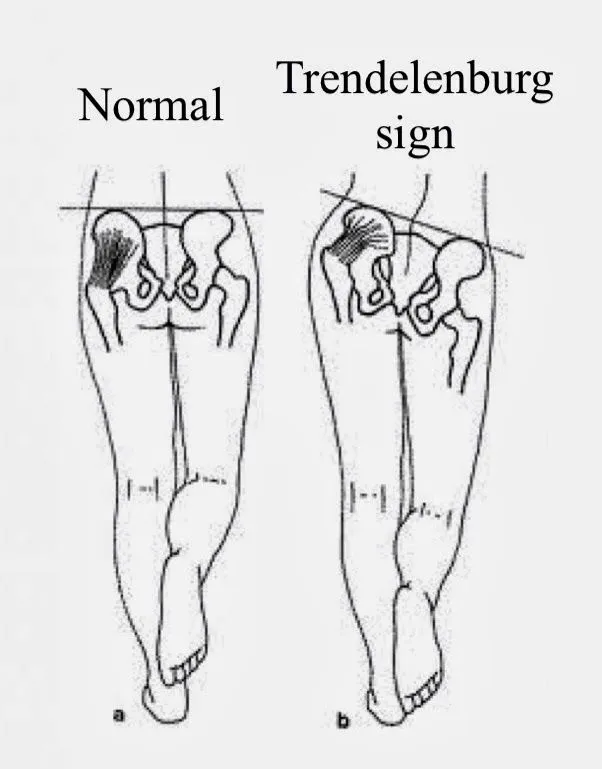
Whilst moving: (Dynamic)
Trendelenburg sign
Instructions:
- Take a position facing a mirror.
- Put your hands on the widest part of your midsection.
- Take ten seconds to stand on one leg.
- Squat on one leg only.
- Throughout the exam, keep an eye out for any pelvic tilt.
- Has the circumference changed?
- Examine both perspectives.
- Findings: You may feel weakness or loss of control in the glute medius muscle on the side of the hip hike if your pelvis tilts.
Treatment:
Severe surgery is the final recommended choice after symptomatic medical treatment that includes physical therapy and exercise to correct the posture.
Medical Treatment:
Pain can be reduced by anti-inflammatory medications.
Acetaminophen (Tylenol), ibuprofen (Advil, Motrin IB), and naproxen (Aleve) are examples of over-the-counter pain medicines.
Physical therapy Treatment of Left pelvic or Right pelvic tilt:
A physical therapist can help with the pain caused by a lateral pelvic tilt by recommending at-home muscle strengthening and stretching exercises. Additionally, the therapist can provide guidance on lifestyle modifications that can be taken to manage the condition.
Physical therapy aims to strengthen weak and/or extended muscles while stretching constricted and tight muscles in order to restore symmetry to the pelvic girdle.
Massage
A massage therapist will release the muscles supporting the pelvic region using a variety of manual techniques.
Additionally, massage treatment aids in enhancing blood flow (income) in the affected muscle or areas, which helps lessen pain and inflammation.
Professional massage therapists employ a variety of methods, including deep tissue massage, myofascial release, and Gua Sha, a traditional Chinese therapy that involves scraping the skin with a massage instrument to increase circulation.
Chiropractic care
In order to alleviate pain and restore a complete range of motion to the muscles, ligaments, and joints around the pelvis, chiropractors treat lateral pelvic tilts holistically.
Stretching, physical therapy, massage therapy, and adjustments may all be part of a chiropractic treatment regimen.
Improved bodily balance is the aim of chiropractic care, which is achieved without the need for drugs or injections.
Navigation of Box:
- Releases
- Stretches
- Activation
- Exercises for strengthening
- Enhancing Your Performance
- Changing negative behaviors
- Taking Care of Scoliosis
- The following exercises are designed to correct lateral pelvic tilts on the right side.
- Perform the same exercises on the opposite side specified if you have a left-sided tilt.
Releases:
- Quadratus Lumborum (Right side)
Instructions:
- Straight on top of the right quadratus lumborum, place a massage ball.
- Place a load equal to your body weight on top of the ball region.
- Over the whole length of the muscle, roll your body.
- Set a goal of one minute.
- Releases of Tensor Fascia Latae
- Glute medius/TFL (Left side)
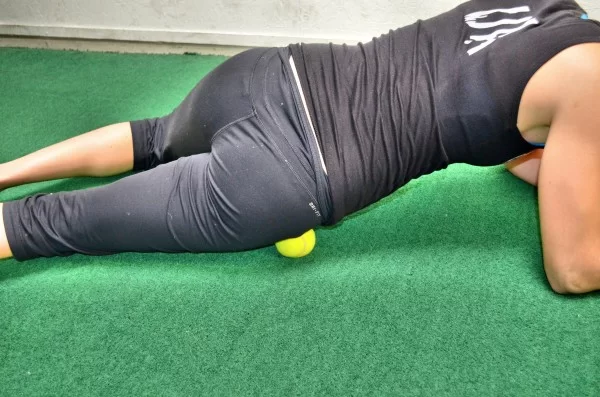
Instructions:
- Directly apply a massage ball to the left tensor fascia latae/glute medius muscle.
- Over the ball, apply your body weight, or load.
- Over the whole length of the muscle, roll your body.
- Set a goal of one minute.
- Adductors (Right side) muscles release
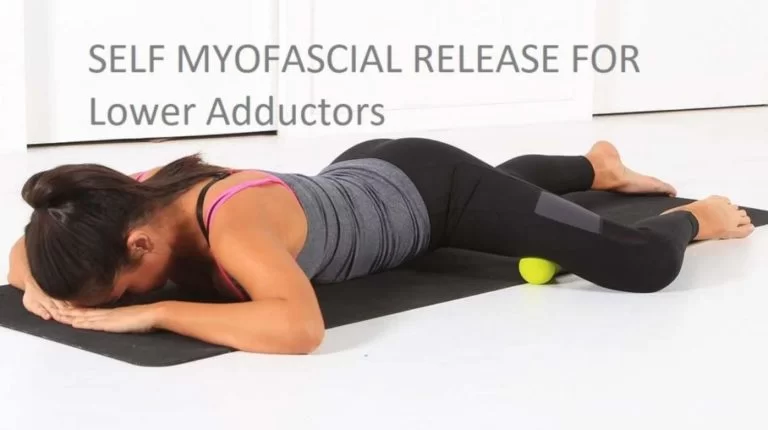
Instructions:
- Directly below the muscles of the right adductors, place a head roller.
- Place the weight (load) of your right leg atop the head roller.
- Ensure that the whole muscle is covered.
- Set a goal of one minute.
Stretches:
- Quadratus Lumborum/Obliques (Right side) Stretch
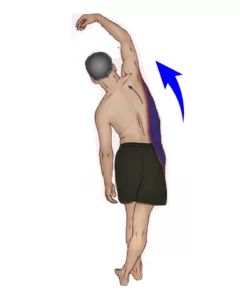
Instructions:
- Start with your left foot turned out to the side and your bases wide apart.
- Spread your arms wide and begin to flex all the way to your left side.
- Extend your upper arm as far as it will go to the left.
- Maintain the position of your torso with your left leg.
- Avoid turning your body around.
- Maintain a somewhat straight leg position.
- Try to feel your right side of the body being stretched.
- For 30 seconds, hold.
- Glute medius (Left side)
Instructions:
- Put yourself in the same posture as before, crossing your left leg over your right.
- Arc your back and sit tall.
- Raise your left leg to meet your right shoulder.
- Turn your torso so that it faces your left knee.
- To feel a stretch on the exterior left hip is the aim.
- Hold for a minute.
- Tensor fascia latae (Left side)
Instructions:
- Put your left leg behind you and take a lunge.
- Retain a narrow posture.
- Verify that your feet are in line with one another.
- Take a forward lunge.
- Turn your pelvis to the back.
- tuck your tailbone underneath you.
- The objective is to experience a stretch on the left upper leg.
- Hold for a minute.
- Adductors Stretch
Adductors (Right side)
Instructions:
- Lean to the left with a side lunge.
- The objective is to get a deep stretch in the area of the right inner calf.
- Give each stretch a minute of hold.
Activation Exercises :
- Hip hitch (Left side)
Quadratus Lumborum muscle
Instructions:
- Sit tall on a chair.
- Give yourself a small tilt to the right.
- Remove your left rear end from the chair.
- Feeling the activation of your left lower back muscles is the aim.
- For three to five seconds, hold the contraction.
- Ten times over, repeat.
- Leg lift (Right side)
Quadratus Lumborum muscle
Instructions:
- Sit tall on a chair.
- Give yourself a small tilt to the right.
- Remove your left rear end from the chair.
- Feeling the activation of your left lower back muscles is the aim.
- For three to five seconds, hold the contraction.
- Ten times over, repeat.
- Glute medius/TFL muscle Instructions.
- Leg lift (Left side)
Adductors muscles.
Instructions:
- With your bottom leg straight and your top leg bent forward, take a left-side lying position.
- Raise your left leg in the direction of the ceiling.
- Maintain a fully still pelvis.
- You should just be moving your leg.
- Take care not to rotate the pelvic region.
- Feeling the activation of your left inner thigh is the aim.
- Take 3-5 seconds to hold the highest position.
- Ten times over, repeat.
- Step by step: Put some weight on the left ankle.
Strengthening Exercises
The following exercises are designed to help you create a more neutral pelvis by training every muscle in both legs that is involved.
- 90/90 Hip shift
- Assume a prone position.
- With your knees and hips 90 degrees flexed, place your feet on the wall.
- Raise your tailbone off the ground and press your feelings against the wall.
- Maintain a flat back on the ground.
- Pull your left knee in towards you and extend your right knee forward without shifting your feet.
- Your right and left outer and inner thigh muscles should both feel tense.
- Hold for ten to fifteen seconds.
- Do this three times.
- Progression: Hold for an extended amount of time Knee to Knee, facing upwards.
- Knee to Knee
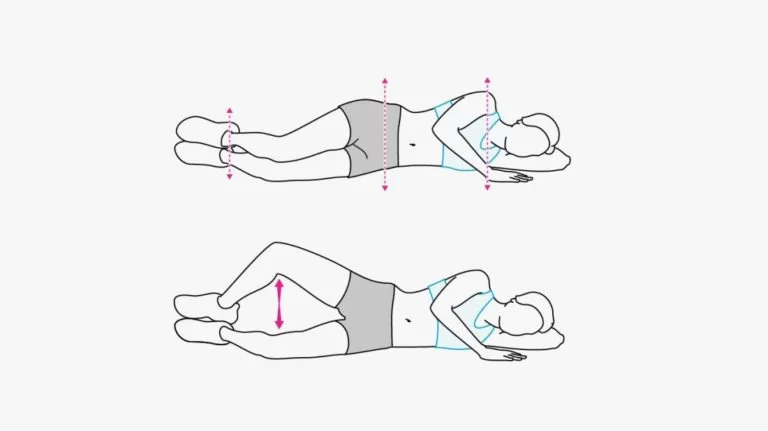
- With both legs bent, lie on your left side.
- Raise your right knee.
- Maintaining this stance, raise your left knee to meet your right knee.
- Hold for ten to fifteen seconds.
- Ten times over, repeat.
- Advance: Maintain for an extended duration.
- Push the side wall (remain on the right side).
- Raise your left hip to around ninety degrees and position the side of that leg away from the wall.
- Flex your planted leg to around a 10-degree angle.
- Insert the raised leg against the wall.
- Feeling the side of your right hip gain is the aim.
- Keep your posture for five to ten seconds.
- Ten times over, repeat.
- Advance: Maintain for an extended duration.
- Hip hitch (Right side on step) (Standing)
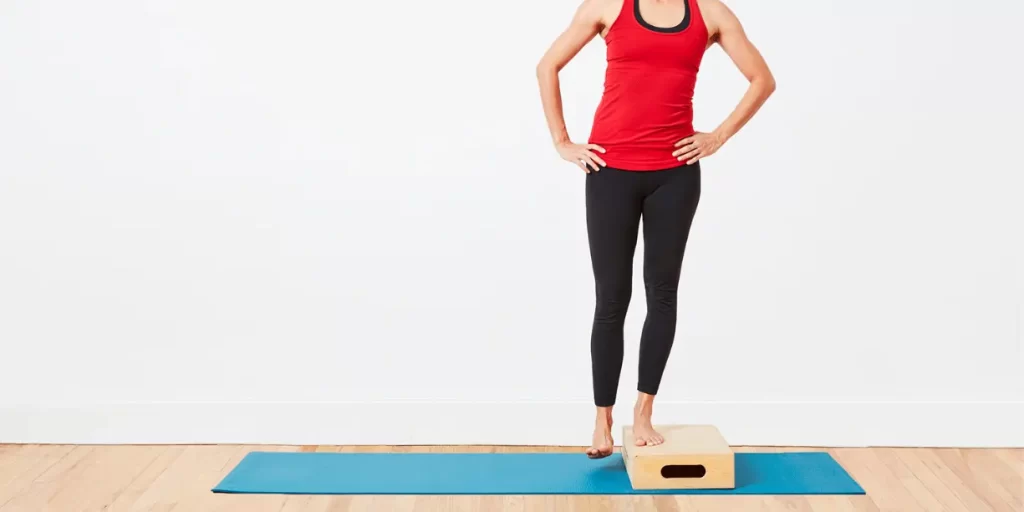
- Place your right leg on the edge of a step while standing sideways.
As you perform the all-over exercise, keep your stance leg somewhat straight. - Movement:
Step 1: Lower your left leg as much as you can.
over: Raise your left hip to the highest point you can.
20 times, repeat.
Progression: Proceed more slowly
- Crab walk
- As seen above, set up a resistance band for the activity.
- To apply more pressure, pull the flex with both of your arms.
- Walk a distance of one meter while taking 1 cm side steps with each leg.
- Maintain a level pelvis throughout the workout.
- To feel the side of your hips activates is the aim.
- Keep going for a minute.
- Increase the resistance in the band as you progress.
- Single leg tap (Stand on Right side position)
- To ensure that your pelvis is level, place your hands on your waist.
- Take a stand with your right leg.
- Maintain a 15-degree bend in it.
- Keep your balance!
- Maintaining your pelvis level, extend your left leg as far as you can and lightly tap it on the floor.
- In every direction, cover. (Front/back/side/diagonal) Use your base of support to gently stroke the head of an ant.
- Keep going for a minute.
- Progression: Make further and/or Gently tap your foot.
- Step down/up (Right side on step)
- Place your right leg on the edge of a step and stand there.
- Keep your pelvis level for the whole workout.
- When you do this, your right knee should flex.
- Keep your feet off the ground.
- Give it a 1cm hover above the ground.
- Go back to where you were before.
- Ten times over, repeat.
- Progression: Proceed more slowly.
- Right side up position in a side plank with the higher leg raised.
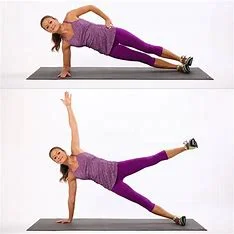
- Put your left side down and adopt the side plank stance.
- Make sure the muscles in your left lower torso remain active.
- Consider using the muscles that would cause you to crunch to the left.
- Push your right leg down from you and extend it out.
- As you raise your right leg, maintain a neutral pelvis.
- Make sure the muscle in your right glute contracts.
- As long as you can continue using appropriate techniques, hold this position.
Improve Your Function
It’s important to practice keeping your pelvis level when you perform your daily activities.
Sitting:
- Equally, divide your weight between your two buttocks.
- Avoid twisting to one side.
Standing:
- Balance your weight equally on each foot.
- Avoid slanting to one side!
- You may check if you stand equally by standing on two different scales, one for each leg if you are unsure.
- The two readings should match if your weight is distributed equally.
- Placing your hands on your hips is an easy technique to disguise your pelvic position.
Take special note of your lopsided hips in the following:
- Walking
- Moving up and down stairs
- Plunge and Squatting
- Think about investing in a kneeling chair. The body is forced to maintain a straight spine posture when using a kneeling chair. Additionally useful for extending tense hip flexor muscles are kneeling chairs.
- Replace your seated workstation with a standing one. Extended sitting can shorten the hip flexor muscles’ contraction and obstruct the blood supply to the lower body muscles. Think about moving to a standing workstation if you must spend a lot of time at a desk for your job.
- Make use of a lumbar support chair at your office. These chairs help protect the lower back’s delicate components and improve your posture in general. Consider utilizing a lumbar support cushion (pillow) if the lumbar support on your chair is poor.
Fixing Bad Habit
You must address the following negative behaviors in addition to working out, since they may be the initial cause of your lateral pelvic tilt.
Common habits associated
- with selecting one leg over the other when standing
- slanting to one side when driving or sitting
- Consistently sleeping on the same side.
- (Tip: To keep the pelvis from tilting, try tucking a little towel beneath the waist crease.)
- infant being held on the side of the hip
- You will need to make the necessary corrections whenever you observe yourself tilting one hip up out of habit.
How to Prevent Lateral Pelvic Tilt?
The condition can be avoided by forming healthy habits, maintaining proper posture, and treating any muscle imbalances or structural issues that may be the source of your lateral pelvic tilt. The following guidance may help to avoid pelvic tilt laterally:
Keep Your Posture Correct:
Observe your posture when standing, sitting, and walking.
Hold your shoulders squarely behind your ears and keep your back straight.
Try not to cross your legs when you are sitting for extended periods of time.
Well-Composed Strength Training:
Incorporate exercises that target the adductors and abductors, two muscles associated with the hips, into your strength training program.
Developing stronger core muscles is another way to stabilize the pelvis.
Regular Stretching:
Regularly stretch your hamstrings, lower back, and hips to maintain flexibility.
Focus on completing stretches that specifically target tight muscles that may be contributing to pelvic tilt.
Even Weight Distribution:
When you walk or stand, balance your weight equally on both legs.
Avoid favoring one leg over the other as this might result in muscular imbalances.
Proper Ergonomics:
Ensure that your workspace’s ergonomics promote good posture.
Lift the chair and desk so that your spine remains neutral.
Evaluation of Leg Length Discrepancy:
To identify and treat any potential leg length difference, see a healthcare professional.
Regular Physical Activity:
Exercise frequently to improve overall muscular strength and flexibility.
Include physical activities such as yoga, swimming, and walking in your daily routine.
Pay Attention to Your Body:
Pay attention to any pain or pain you may be experiencing in your lower back, pelvis, or hips.
See a doctor if you notice any asymmetry or if your symptoms don’t go away.
Maintain a Healthy Lifestyle:
Eating a balanced diet and drinking plenty of water are two aspects of a healthy lifestyle that can promote overall musculoskeletal health.
Complication
Untreated lateral pelvic tilt may lead to musculoskeletal issues as well as other challenges. A few potential negative effects of lateral pelvic tilt include the following:
imbalances in muscles:
Lateral pelvic tilt often results in muscular imbalances, with some muscles becoming tense and others weak. This imbalance may cause the pelvis and related tissues to lose some of their stability and functionality.
Back Pain:
Lower back pain is frequently the result. Pain and discomfort may be caused by an increased strain on the lumbar spine as a result of pelvic dislocation.
Hip Pain:
The shifting pelvic position may have an effect on the hip joints, potentially causing pain and inflammation. This may affect the range of motion and day-to-day activities.
Signs of a discrepancy in leg length:
Leg length discrepancy is sometimes associated with lateral pelvic tilt and can cause symptoms like pain and unsteadiness in stride.
Sciatica:
Sciatica is caused by compression of the sciatic nerve, which can occasionally be caused by lateral pelvic tilt. This might cause numbness, tingling, and soreness down the back of the leg.
Spinal curvature, or scoliosis:
Consistent lateral pelvic tilt may contribute to or exacerbate scoliosis and other forms of spine curvature. Additionally, this can impact posture and the position of the spine.
Reduced Flexibility and Mobility:
Lateral pelvic tilt may reduce the range of motion and affect normal gait. Daily chores may become difficult to complete because of this mobility restriction, and compensatory movements may be made in other body parts.
Insufficient in Balance:
An unequal weight distribution caused by a lateral pelvic tilt can lead to balance issues, an increased risk of falls, and accidents.
Chronic pain and discomfort:
The constant pressure that the lateral pelvic tilt places on the muscles and joints can result in chronic pain and discomfort, which can impair a person’s quality of life if treatment is not received.
Impact on The sport of sportsman:
Because of altered biomechanics and reduced movement efficiency, athletes with lateral pelvic tilt may suffer a drop in performance.
It’s important to keep in mind that not everyone with lateral pelvic tilt may experience all of these issues and that symptoms may differ in intensity from person to person.
Prognosis
The patient’s dedication to therapy, underlying reasons, and prompt intervention all affect the prognosis for lateral pelvic tilt. Many patients may benefit from targeted therapy in addition to a proactive strategy to restore pelvic position and lessen associated pain.
Conclusion
One side of the pelvis being higher than the other is known as lateral pelvic tilt. It might result from muscle imbalances, biomechanical issues, or differences in leg length, all of which can lead to pain and bad posture.
Treatment options include focused exercises, physical therapy, and, in certain cases, orthopedic operations to address the underlying problems. Early intervention is essential to prevent long-term problems. Consultation with a healthcare professional is recommended for an assessment and a personalized treatment plan.
FAQs
How can my pelvic floor be tested?
Method for Women
Place your finger inside your vagina while lying down. Squeeze the muscles of your vagina around your finger. It should be possible for you to feel the pressure on your finger in addition to the sensation in your vagina. You are working the appropriate muscles if you can feel this.
Which exercises loosen up tight hips?
Stretches for the Hips 90/90
With your knees bent at a ninety-degree angle, take a seat on the floor with one leg in front of you and the other behind. You should clearly feel your hips releasing and extending as you slant slightly forward and maintain this posture for at least thirty seconds.
What is the greatest workout to correct anterior pelvic tilt?
Squats. An essential lower body exercise that can help with anterior pelvic tilt correction is the squat. Make sure your back stays straight and your knees follow over your toes as you drop your hips as if you were sitting on an imagined chair.
How can a dislocated pelvis be corrected?
Exercise can help realign the pelvis to a neutral posture in mild cases of misalignment. The supporting muscular groups, such as the glutes and abdominals, are strengthened by common workouts like planking and squats. Remember to maintain the greatest amount of symmetry in your body shape.
What weak muscles are involved in pelvic tilt?
Pelvic Anterior Tilt
APT is characterized by a forward tilt of the pelvis, which causes the belly to protrude and the lumbar spine to assume a greater degree of lordosis (Suits, 2021). Numerous things, such as weak gluteal muscles, tight hip flexors, and bad posture, might contribute to it.
Which pelvic position is ideal?
How to Sit More Properly: A Guide to Good Posture…
Refrain from rounding or overhanging your spine when sitting and maintain a neutral pelvis. Remember, your body likes symmetry, thus symmetry is always the aim. Avoid sitting with your legs crossed, on wallets, or in other positions that throw off your pelvic stability.
What regulates the inclination of the pelvis?
The force-couple generated by the hip extensors and abdominal muscles causes a posterior pelvic tilt. Improved control of the hip and pelvis in a broad range of postures is made possible by the interplay of these two muscle groups.
Does pelvic tilt occur when sitting?
Up to 85% of men and 75% of women who do not exhibit any symptoms may have an anterior pelvic tilt, according to some studies. Inactivity or prolonged sitting are the main causes of anterior pelvic tilt. It may result in further symptoms and alter posture and the curvature of the spine.
What advantages can pelvic tilts offer?
Exercises for Pelvic Tilt: Advice and Suggested Modifications
Pelvic tilts assist in reversing that position. They also help relax tense muscles in your lower back that can cause pain in your back and strengthen your deep core to support your body during regular tasks like lifting and squatting.
How long does a pelvic tilt take to correct?
Anterior pelvic tilt, which can result from prolonged sitting, is a frequent disease that can strain the lower spine and make one appear overweight. Fortunately, the problem may be resolved with a short fitness regimen that takes 8 to 12 weeks to complete.
How can my pelvis be corrected at home?
Squats: Stand with your feet shoulder-width apart, engage your core, and lower yourself into a squat while keeping your pelvis neutral. To propel your pelvis forward and stand back up, contract your glutes, being mindful to keep your pelvis in place the entire time. Make fifteen to twenty of these.
Is pelvic tilt reversible?
Pelvic tilts are often treated with physical therapy, which generally consists of stretches, massages, and exercises that build muscle. When one leg is longer than the other, shoe inserts may be suggested to provide more comfortable mobility.
Is an angle pelvic tilt typical?
A lateral pelvic tilt occurs when the pelvis shifts so much from side to side that one hip is higher than the other. This leads to the development of unilateral muscle imbalances that impact the entire body. The erector spinae muscle group is often responsible for this tilt, which is why it should always be addressed in this instance.
How is lateral pelvic tilt identified?
By examining how the pelvis aligns with the horizontal plane, lateral pelvic tilt can be identified. Using tools like a plumb apparatus, one may quantify pelvic symmetry, assess the levelness of the iliac crests, and place the anterior superior iliac spine (ASIS).
What is a pelvic tilt with lateral shift?
Lateral pelvic tilt is caused by the bigger right diaphragm pressing on your pelvis, which causes it to become misaligned. When the pull of the right diaphragm finally outweighs the pull of the left, our body’s center of mass shifts to the right.
How can a sideways pelvic tilt be corrected?
To correct a sideways pelvic tilt:
Do these exercises at home to help correct a lateral pelvic tilt.
Leg lifts backward. With this workout, your hip ROM will improve and your gluteus muscles will get stronger.
Lift your legs backward while standing. With this workout, your gluteus muscles will grow stronger and your balance will improve.
Raise your hips.
a clamshell.
the hips’ abduction.
A lateral pelvic tilt: what causes it?
We will look at two of the most common reasons for lateral pelvic tilting: changes in function caused by tight muscles and structural problems caused by a leg length difference. The pelvis is prone to tilt laterally when there is unilateral hypertonicity or spasm in the lower back muscles.
References
- Patel, D. (2022, August 18). Lateral Pelvic Tilt – Cause, Symptoms, Treatment, Exercise. Samarpan Physiotherapy Clinic. https://samarpanphysioclinic.com/lateral-pelvic-tilt-treatment/
- Physiotherapist, N. P. (2023, December 13). Lateral Pelvic tilt (Left vs Right Pelvic tilt): Causes, Treatment. Mobile Physiotherapy Clinic. https://mobilephysiotherapyclinic.in/left-vs-right-pelvic-tilt/

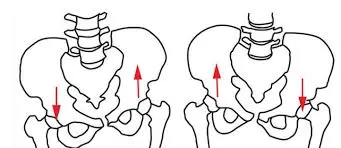
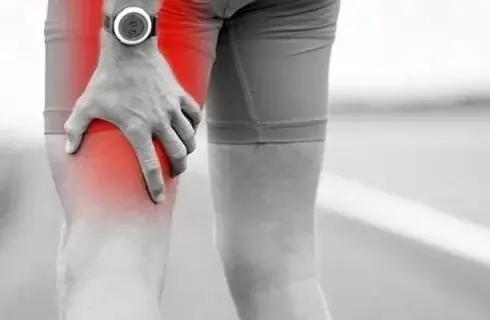
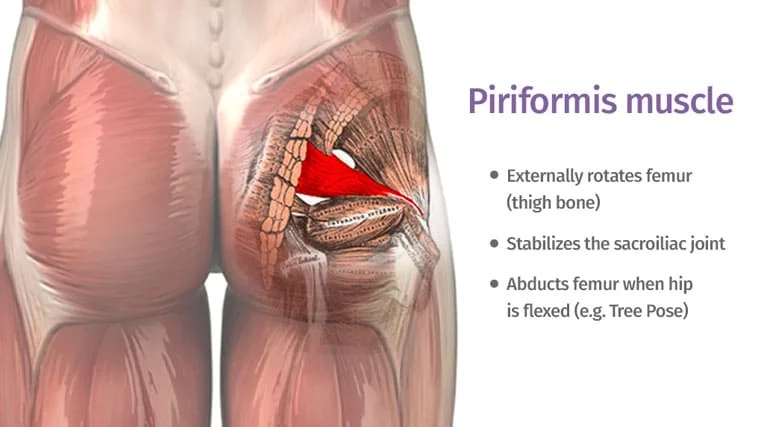

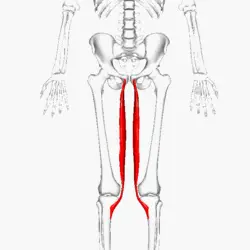
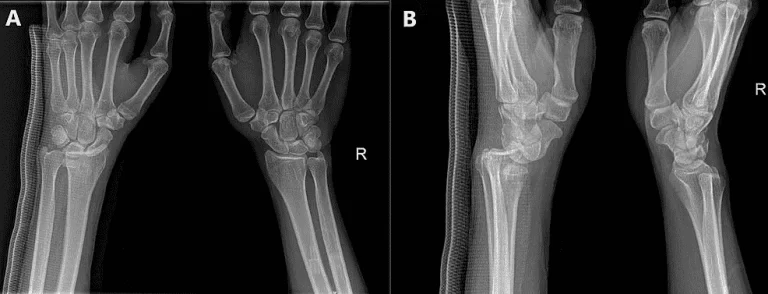
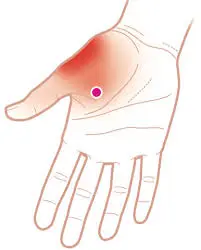
3 Comments